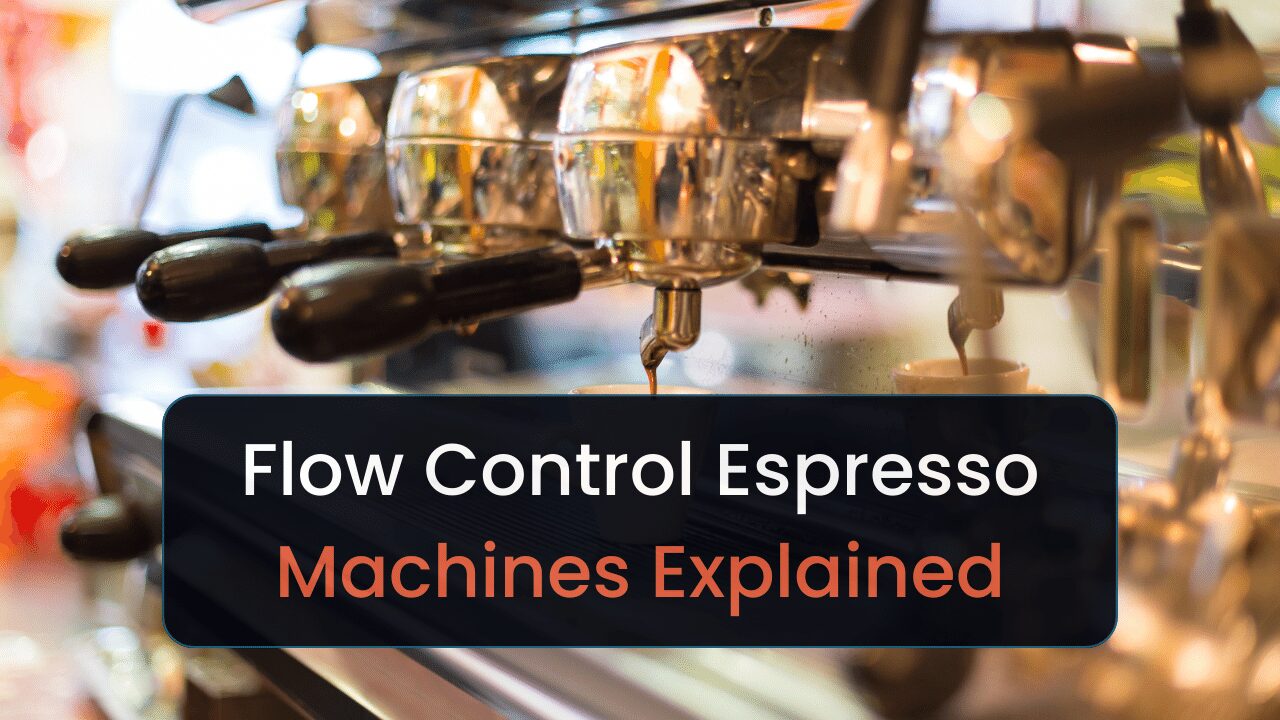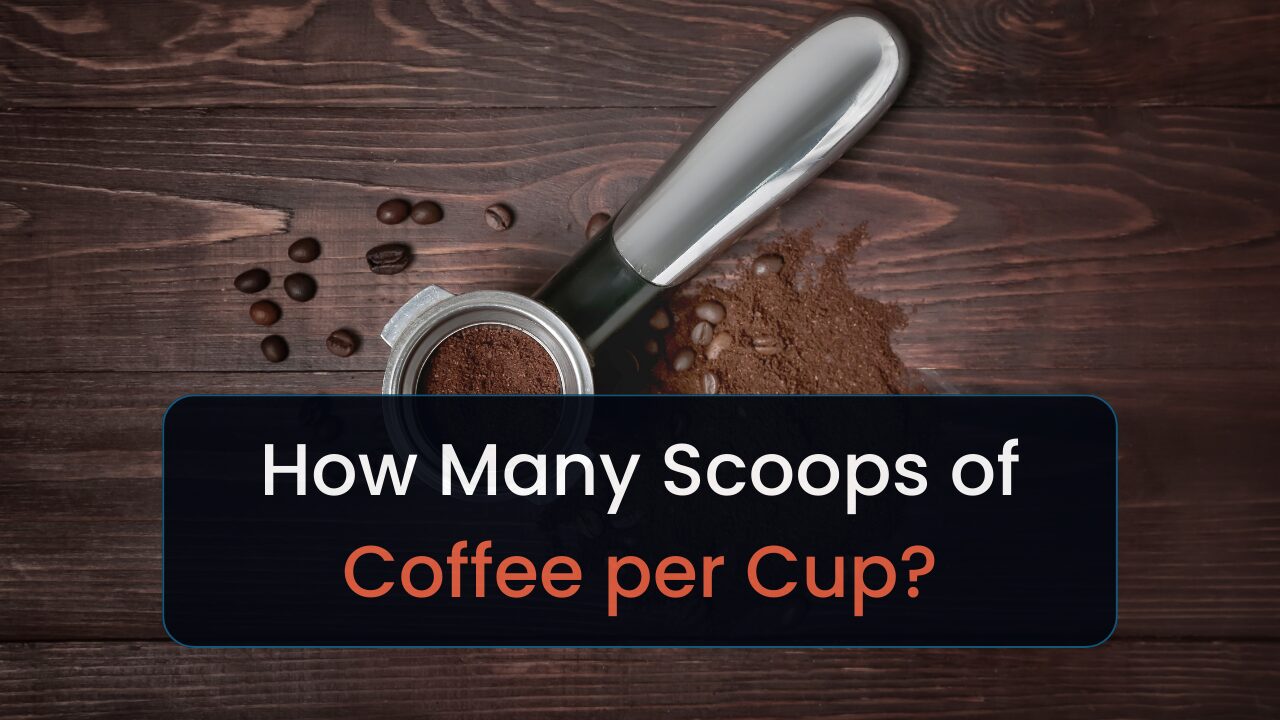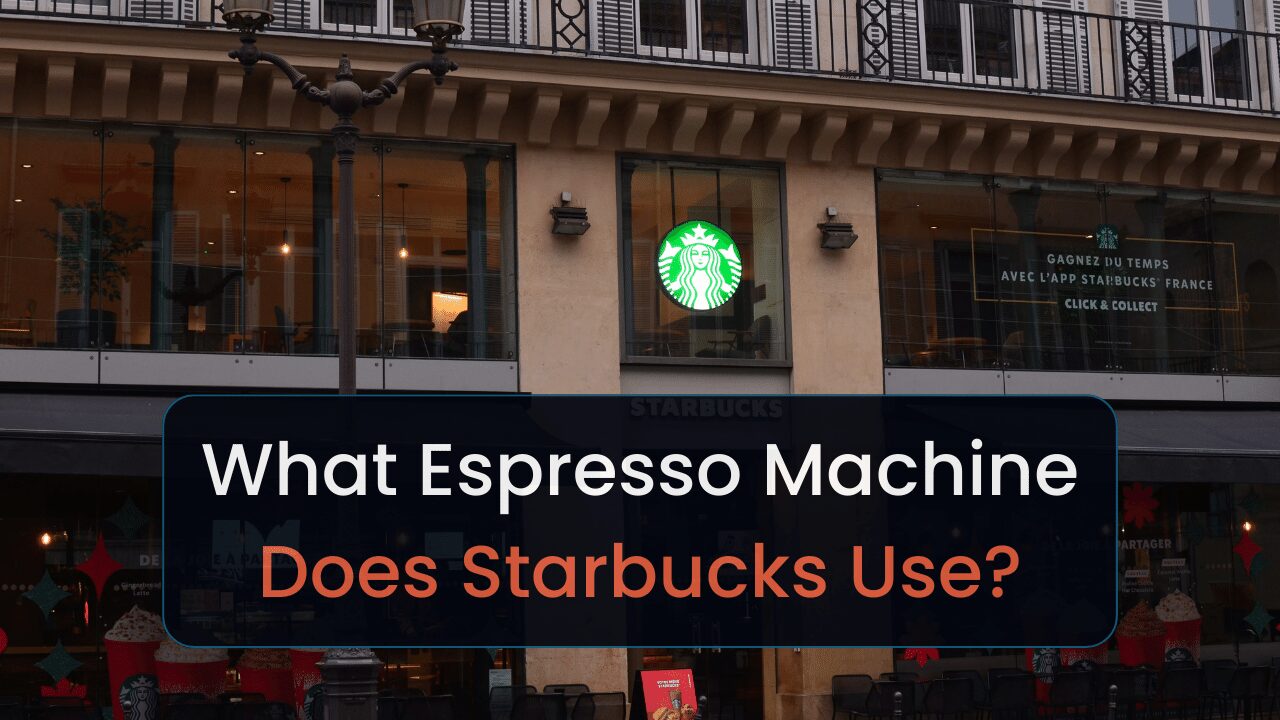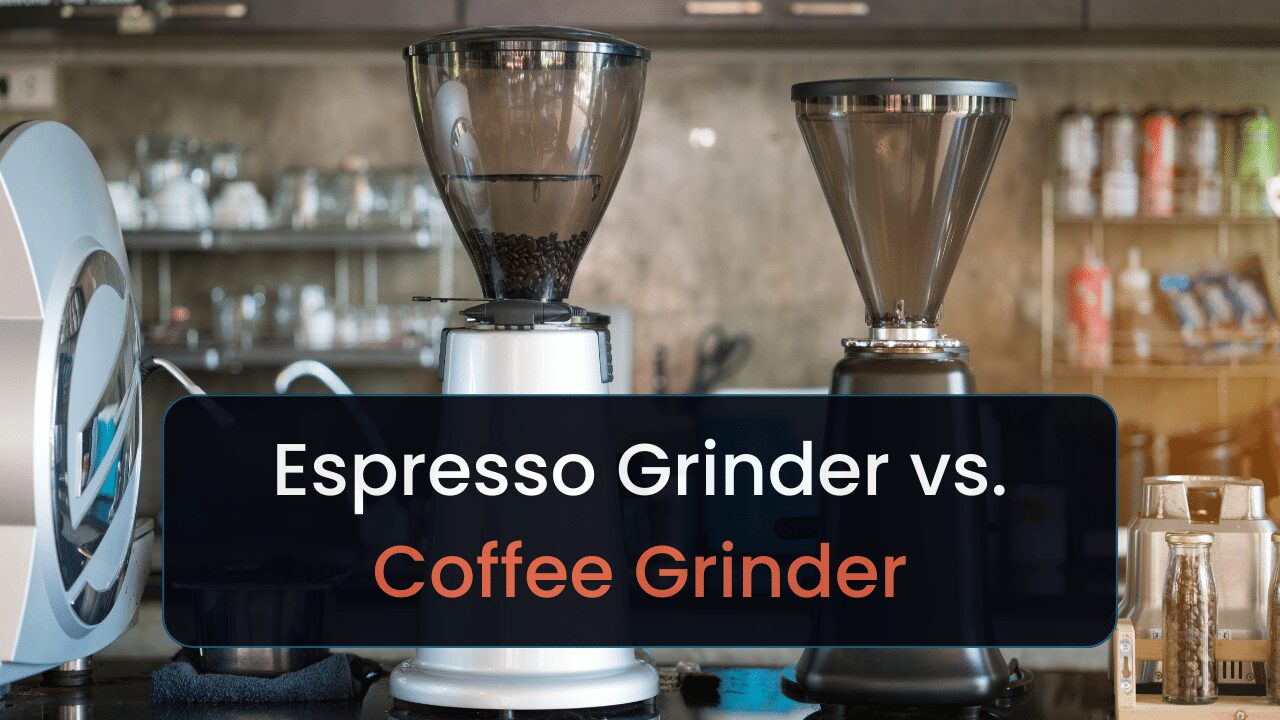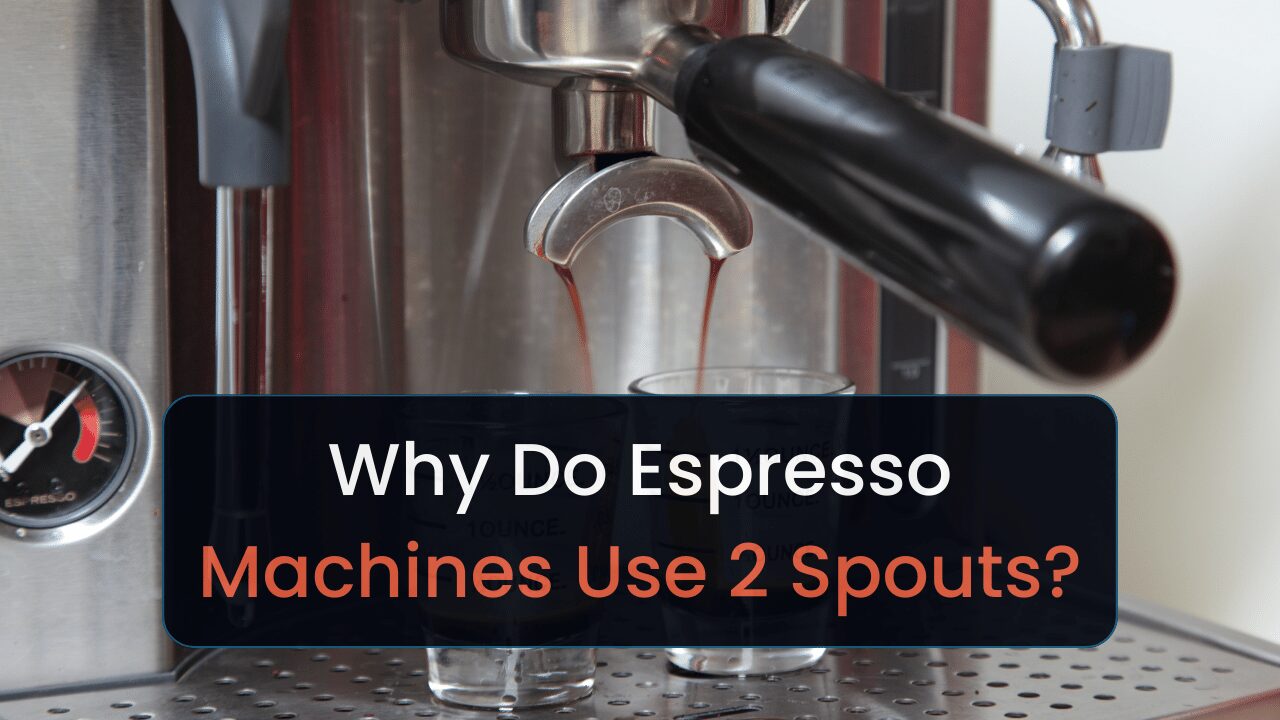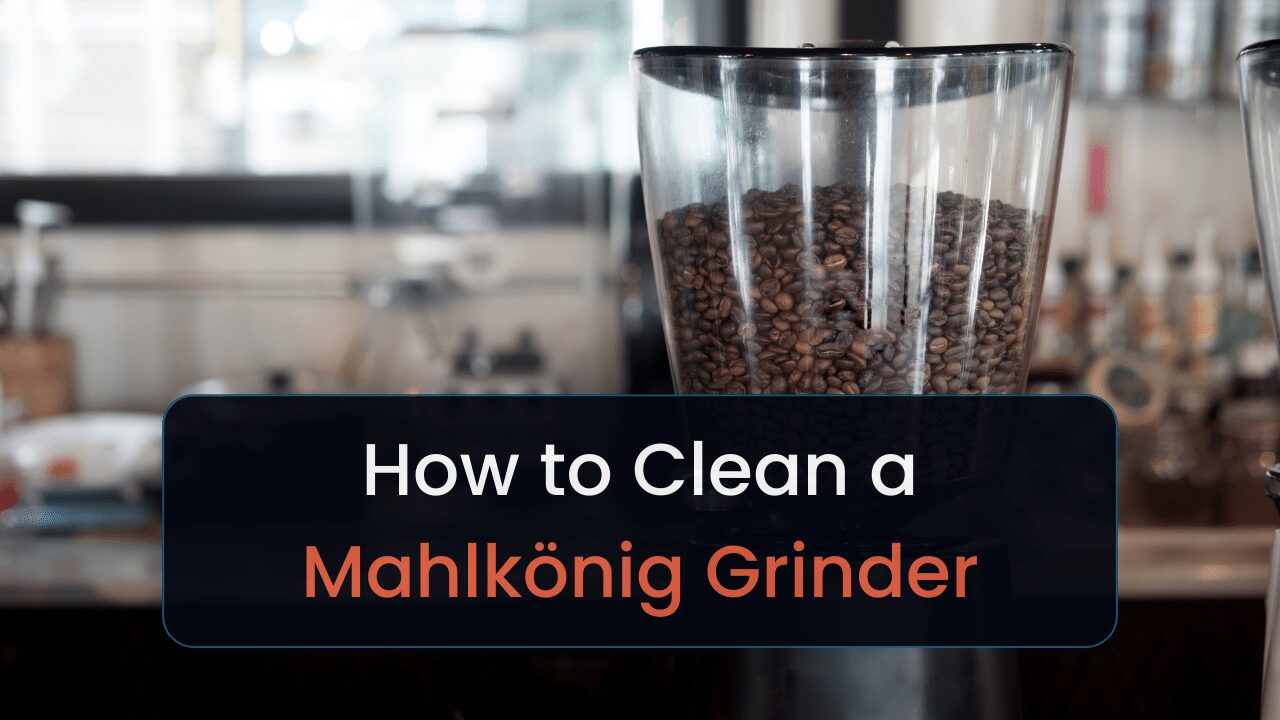This post is an overview of the best industrial coffee grinders for coffee roasteries, large coffee shops, and smaller coffee bean manufacturers. Keep reading to learn more.
As someone who considered opening a coffee shop, eventually scaling to an industrial coffee grinder crossed my mind. This guide will provide my findings.
I chose the Mahlkönig DK27 as the best overall grinder because it uses tungsten carbide burrs and can grind more than 600 pounds of coffee per hour.
Making it an exceptional choice for busy coffee shops that want to sell pre-ground beans and roasteries.
I’ll explain each coffee grinder’s pros and cons, who they’re best for, and features that’ll help your business.
Let’s dive in.
Want to see more industrial grinders? Check out all we have here.
Top 4 Industrial Coffee Grinders
- Mahlkönig DK15 LS: Top pick
- Mahlkönig EK43: Most affordable
- Pinecone Foxtail: Best for wholesalers
- Mahlkönig DK15: Best for small-scale roasteries
4 Best Industrial Coffee Grinders
I’ll cover the pros and cons of each device throughout the following sections. Then, I’ll explain who they’re best for, talk about cool features, and provide other relevant information. Afterward, I will provide essential factors to consider when shopping for an industrial grinder.
All the grinders on this list are meant for small- to medium-size coffee roasters who need to grind up to 600 pounds of coffee per hour. We don’t have any machines for large-scale manufacturers that can grind more than 4,000 pounds per hour.
Larger machines I’ve seen can grind up to 15,500 pounds per hour [1]. If you’re after machines like this, you’ll need to source unique manufacturers. The ones we provide in this list are much easier for small- to medium-sized businesses to obtain.
Now that’s out of the way, here are my recommendations.
1. Mahlkönig DK27 LVH: Best Overall
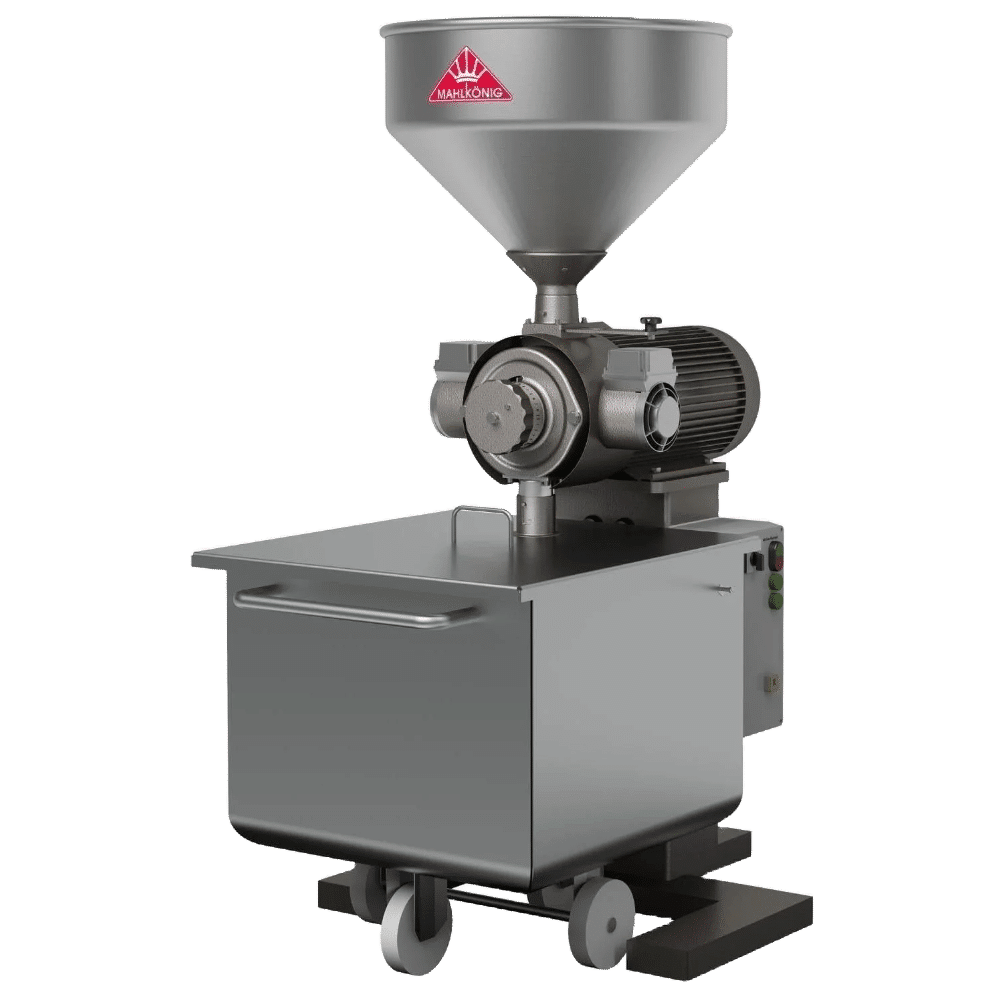
| Price | $$$ |
| Best For | Roasteries and large coffee shops |
| Beans It Can Grind Per Hour | 661 lbs |
| Burr Type | Flat, stainless steel |
| Grinder Dimensions (D × W × H) | 37.4 × 20.5 × 63 in |
| Warranty | 1 year |
| Hopper Capacity | 66 lbs |
| Grinder Speed | 1740 RPM (60Hz) |
Pros:
- Can grind up to 616 pounds per hour
- Tungsten carbide steel burrs
Cons:
- Expensive
- Very loud
The Mahlkönig DK27 is a fantastic coffee grinder for large coffee shops and roasteries who need to grind large amounts of beans fast.
It has 180 mm tungsten carbide burrs that’ll grind for up to 40 tons. So long as you take good care of the machine. This type of burr will perform much better at higher temperatures than stainless steel.
Because stainless steel usually heats up and damages coffee beans, which could make the resulting coffee taste bitter. You don’t want such a mistake when grinding hundreds of pounds of beans an hour.
However, I said “up to” 616 pounds an hour. The amount your machine can grind per hour will depend on the consistency you want. Here’s a summary:
- Medium grind: 617 pounds an hour.
- Fine: 573 pounds an hour.
- Super fine (for Turkish coffee): 396 pounds an hour.
The machine will need to slow down as it produces finer grinds in order to achieve such a consistency. Hence, the lower weight per hour. This machine should still work for most roasteries, though.
I said it’s good for coffee shops, but I wouldn’t place it around where the customers are sitting. It demands A LOT of space since it’s an “industrial” machine. And since it can grind so many pounds of beans an hour, it’s loud.
Loud enough to where no one could probably hear another person in a conversion. I’d keep this in a room hidden away from the public.
You may not need such a large and loud machine. I have an alternative.
2. Mahlkönig EK43: Most Affordable
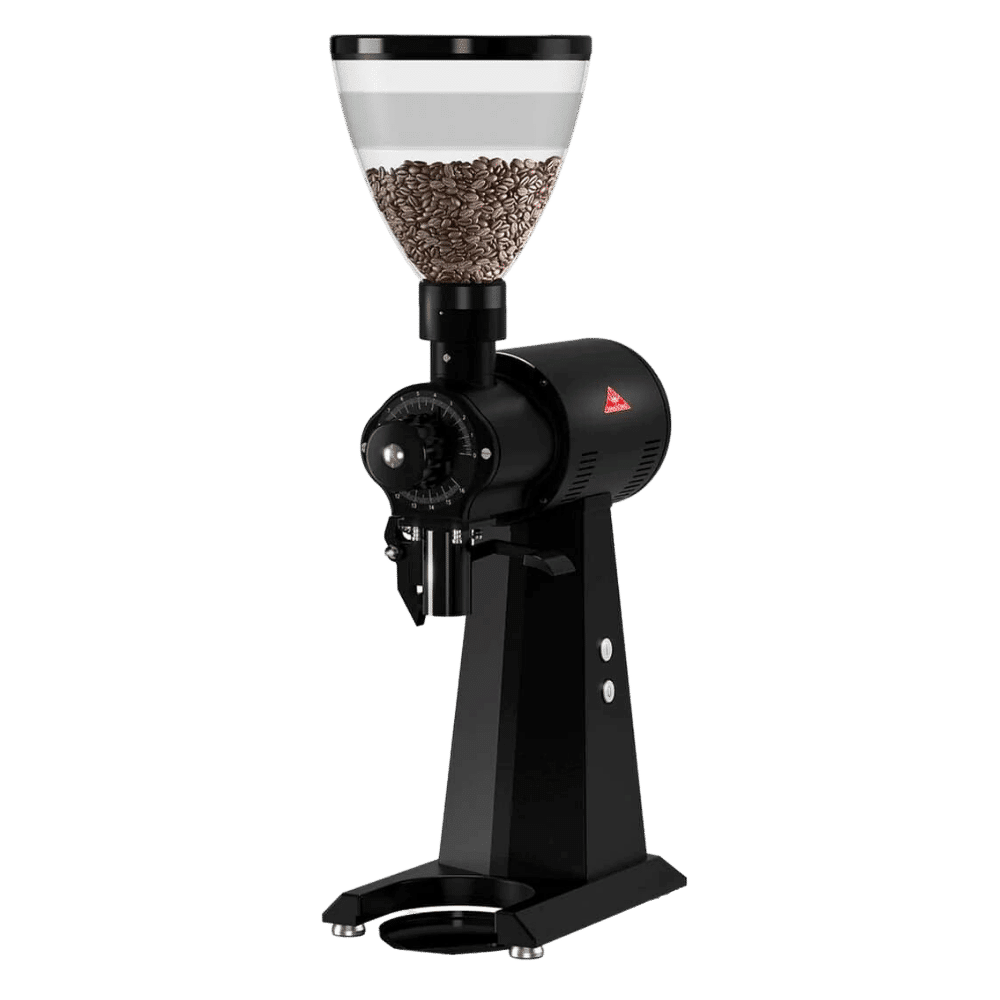
| Price | $ |
| Best For | Large coffee shops |
| Beans It Can Grind Per Hour | 166 lbs |
| Burr Type | Flat, stainless steel |
| Grinder Dimensions (D × W × H) | 9.06 × 32.6 × 16.1 in |
| Warranty | 1 year |
| Hopper Capacity | 3.3 lbs |
| Grinder Speed | 1760 (60 Hz) |
Pros:
- Low retention
- Exceptional grind quality
- Includes a bag holder
Cons:
- No grind-on-demand feature
- May require frequent recalibration
The Mahlkönig EK43 is a stellar coffee grinder for high-traffic coffee shops and small-scale roasteries.
That’s thanks to its 93 mm cast steel burrs. They aren’t as durable as tungsten but could still last for years with good care.
You may have also seen the EK 43S model. This variation is a smaller version of the EK43 and is better for small coffee shops, coffee stands, or coffee carts. Thus, if you want the fantastic grind quality of the EK43 in a more limited space, that’s possible.
This machine will produce some of the most uniform grinds from any coffee grinder. Ensuring that every cup of coffee comes out consistent and balanced.
The machine is simple to use and won’t require much training for your barista. You press the power switch to turn your machine on or off. Then, you’ll use the dosing clip to control the amount of beans you grind at once.
The bag clip is an excellent addition to this device if you want customers to grind their beans. It’ll prevent them from needing to hold their coffee bean bag.
The EK43 has low grind retention due to having larger burrs, which create a greater centrifugal force that expels coffee grounds from the grinder. Less retention means that your business is wasting fewer beans.
The grind consistency of the EK43 can drift slightly over time, especially with heavy use. This means you may need to recalibrate the grinder every few months. And there’s no on-demand grinding, meaning your grinder won’t grind a specific amount of coffee beans for a portafilter.
If you wanted to use this grinder for brewing, you’d need to pre-dose your beans to prevent waste.
3. Pinecone Foxtail: Best for Wholesalers
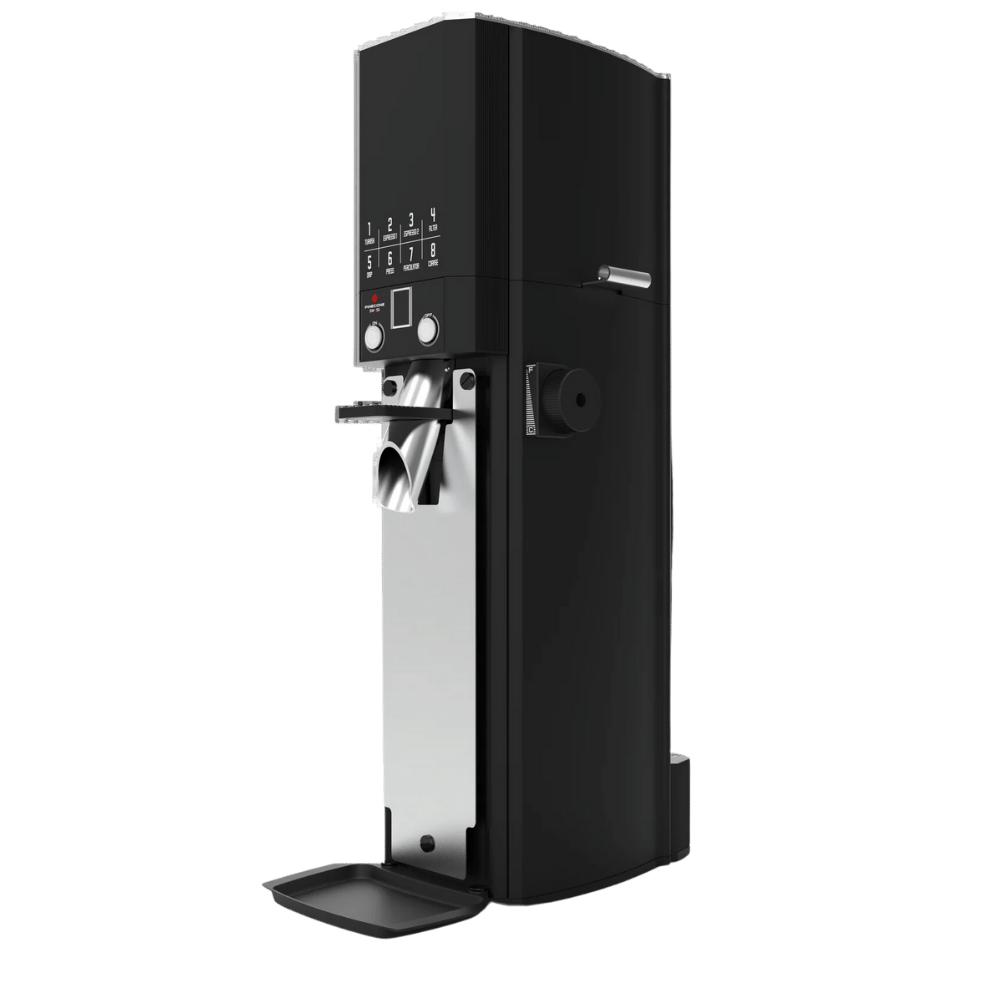
| Price | $$ |
| Best For | Wholesalers and coffee shops |
| Beans It Can Grind Per Hour | 330 lbs |
| Burr Type | Flat, stainless steel |
| Grinder Dimensions (D × W × H) | 9.8 × 31.9 × 12.6 in |
| Warranty | 1 year |
| Hopper Capacity | 5.5 lbs |
| Grinder Speed | 1325 RPM |
Pros:
- Can grind 5.51 lbs per minute
- Great for multiple brewing methods
Cons:
- May be overkill
- No on-demand grinding
The Pinecone Foxtail coffee grinder works best for high-volume cafes, roasters, and coffee wholesalers.
The 120 mm burrs it uses reduces coffee retention and enables it to have such a high output. Meanwhile, these burrs will work for many brewing methods like Turkish coffee and cold brew. Ideal for giving customers many grind consistency options.
It doesn’t require as much space as the Mahlkönig DK27 LVH, but it’ll grind half the amount the Mahlkönig grinder can for a much cheaper price. And it’ll fit better in coffee shops that don’t have much extra space.
However:
It works best for grinding coffee for bags. Because it’s not on-demand, you’ll need to pre-dose coffee grounds if you want to immediately place the ground coffee in a coffee maker.
Smaller coffee shops should avoid getting this device because it may be overkill. You should understand how many pounds of coffee you’ll get per hour before getting an industrial grinder. Otherwise, you’re wasting money and space.
Want on-demand grinding? Check out the next pick.
4. Mahlkönig DK15 LS: Best for Small-scale Roasteries
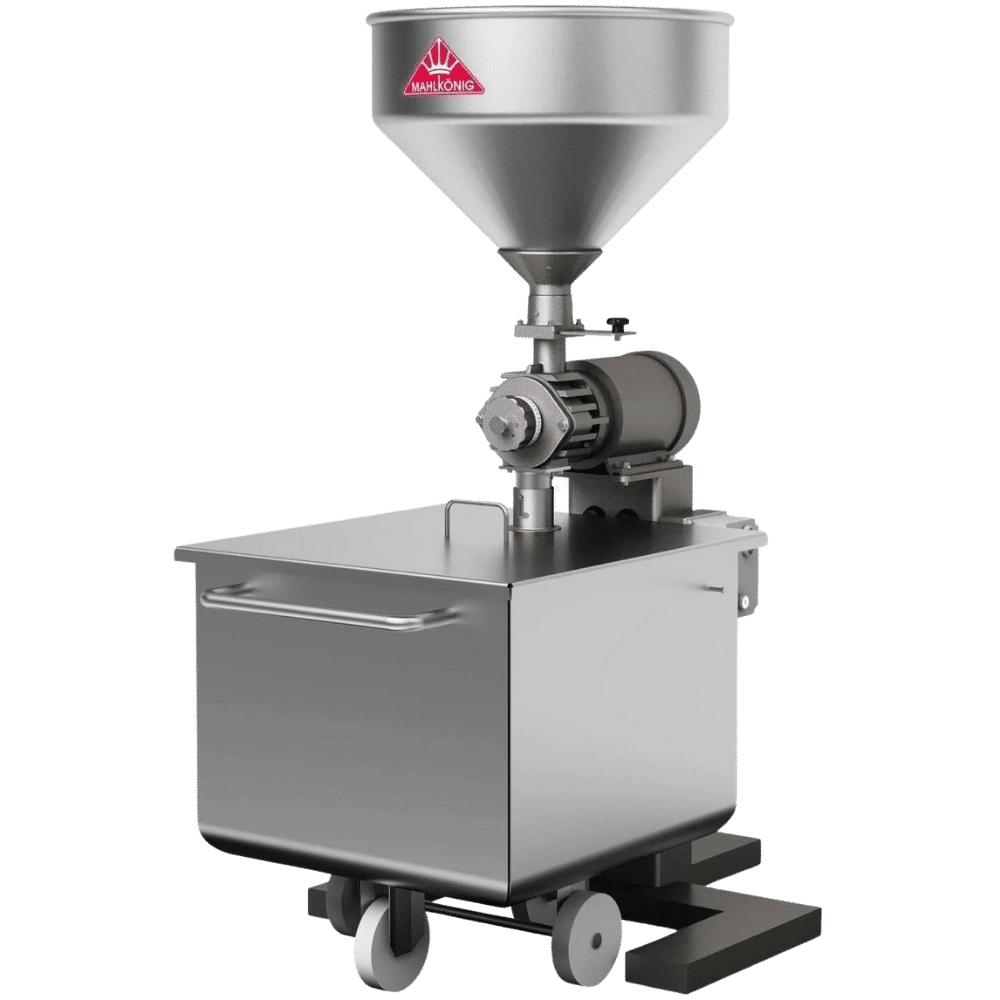
| Price | $$$ |
| Best For | Coffee roasters |
| Beans It Can Grind Per Hour | 265–287 lbs |
| Burr Type | Flat, stainless steel |
| Grinder Dimensions (D × W × H) | 11.8 × 13.8 × 24.8 in |
| Warranty | 1 year |
| Hopper Capacity | 66 pounds |
| Grinder Speed | 1400W (60Hz) |
Pros
- Powerful motor
- Can grind up to 287 pounds an hour
Cons:
- Expensive
- Doesn’t use tungsten burrs
The Mahlkönig DK 15 is a fantastic machine for small-scale coffee roasteries that need a super durable machine that’ll last for years.
It uses 145 mm flat stainless steel burrs that’ll remain intact despite continuous use. Making it practical when you’re grinding hundreds of pounds of beans daily. I wish that it used the tungsten burrs like the DK27, but nope.
Such burrs would last longer and will prevent the high speeds of the grinder’s motor from burning your beans. You could save several thousand dollars by opting for the DK 15 LH, though.
Why get this over something like the Pinecone Foxtail? Compare the hopper capacities and think about how often you’d need someone to refill it. That would cut into productivity.
Also, the DK 15 S has a 3-phase motor that has a high starting tongue and cools your machine to prevent it from overheating. That’s great when you’re grinding a lot of beans daily.
You’d also want this machine if you have a dedicated room at your coffee shop or roasteries. It requires a lot of room and will make a lot of noise. That’s not ideal in an area with customers around.
Now that we’ve seen the recommendations, let’s see what factors make for a good industrial coffee grinder.
Who Needs an Industrial Coffee Grinder?
Businesses that require a high capacity and robust coffee grinder would benefit from investing in industrial equipment.
Here are some specific examples of who needs an industrial coffee grinder:
- Coffee roasteries: Roasteries that produce large quantities of roasted coffee beans for wholesale distribution or retail sales.
- Large coffee shops and cafés: Establishments that serve a high volume of coffee drinks throughout the day.
- Coffee bean manufacturers: Companies that process and package coffee beans for consumption.
- Food and beverage processing plants: Manufacturers of coffee-based products such as coffee syrups, coffee ice cream, or coffee-flavored desserts.
- Restaurants and catering companies: Companies that serve coffee as part of their menus or provide coffee for catered events.
If you run a business that falls into any of these categories, then an industrial coffee grinder is an essential investment. These grinders are designed for heavy-duty use and can handle the demands of high-volume coffee production.
Industrial Coffee Maker Buying Guide
You’ll want to consider these factors when shopping for an industrial coffee grinder:
| Factor | Description |
| Brand | Determines customer service, product quality, and more. |
| Price | How much it’ll cost. |
| Features | Additional features to make the machine easier to use. |
| Burr Material | How durable burr is. |
| Bean Capacity | How many beans you can grind before refilling the hopper. |
| Grind Speed | How many beans per hour you can grind. |
The following sections will dive deeper into each of the factors to consider when shopping for an industrial coffee grinder. I’ll explain how important each point is and how they’d affect your coffee shop.
Here we go.
1. Brand
There aren’t many well-known brands that produce industrial coffee grinders, except for the following:
- Mahlkönig: A German brand.
- Pinecone: A lesser-known brand from Switzerland.
- Anfim: An Italian brand that produces machines for smaller-scale businesses.
- Mazzer: Another Italian brand that produces smaller-scale machines.
- Ditting: Switzerland-based brand that makes high-capacity grinders for coffee shops.
Mahlkönig typically has the most high-end industrial coffee grinders due to using premium materials like tungsten for their burrs. These machines also cost the most. Partially due to the brand name alone, but there’s also testing and components that contribute to the price.
Speaking of…
2. Price
Low-end industrial coffee grinders that grind under a couple of hundred pounds an hour will begin at around $3,000. Higher-end machines with more robust components that can grind more will cost $4,000–$22,000.
You don’t want to cheap out when getting an industrial machine. Because you’ll need to ensure that the machine will withstand constant daily use while spitting out consistent grinds for your customers’ beans.
Mostly materials and brand names will contribute to these machine’s prices. However, these machines are “industrial.” Hence, there’s always going to be a large price tag attached.
Let’s check out potential features these machines could have.
3. Features
Almost all industrial coffee grinders have one purpose. To grind a large amount of beans daily. There aren’t many features that you could add to improve this process, except higher-quality parts.
“Higher-quality parts” could include using better motors that aren’t susceptible to overheating when used a lot. Or you could have larger bean hopper capacities to reduce the amount of times you’ll need to refill your machine.
I don’t consider the above as “features,” but instead as design elements.
Here’s another design that’ll make a difference in your grinder’s ability to perform.
4. Burr Material
Most industrial coffee grinders will use a hardened stainless steel to withstand industrial-scale use. Some brands, like Mahlkönig, will use tungsten carbide burrs, which will last much longer. This type of material also performs better at higher temperatures and won’t burn beans.
Let’s talk about bean hopper capacity.
5. Bean Hopper Capacity
More expensive industrial coffee grinders will have bean hopper capacities that go up to 70 pounds. Machines meant for massive-scale businesses could have hundred-pound hoppers. Smaller machines will have 3 to 10 pounds of capacity.
The larger the hopper, the less you’ll need to refill it. However, if you also need an on-demand grinder for serving coffee at a coffee shop, you’ll need to pre-dose your grinds. Otherwise, you’ll end up with way too many beans.
Here’s one more factor.
6. Grinder Speed
Most industrial coffee grinders will grind more than 100 pounds of coffee per hour. The more you pay for a grinder, the more you can grind hourly. This is only necessary if you grind a lot.
If you need to grind at a massive scale (more than 1,000 pounds an hour), you’ll need to find specialized industrial coffee grinder manufacturers.
Otherwise, there’s nothing else to cover. However, you may not yet understand what an industrial coffee grinder is.
What Is an Industrial Coffee Grinder?
An industrial coffee grinder is a high-capacity coffee grinder designed for commercial or industrial coffee production. These grinders are much larger and more powerful than home coffee grinders, and they can grind coffee beans at a much faster rate.
Key features for these types of grinders include:
- High capacity: Can typically grind hundreds or thousands of pounds of coffee beans per hour.
- Durable construction: Built to withstand heavy use.
- Versatile: Can grind coffee beans to a variety of grinds, from coarse to fine.
- Easy to use: They have simple controls and clear instructions, and they are designed to be as user-friendly as possible.
They’re not the same as typical commercial grinders, though.
While both grinders support high-volume use, they differ in their capacity and intended applications. You’d use industrial coffee grinders in large-scale production facilities. And it can handle massive quantities of beans, often hundreds or thousands of pounds per hour.
Commercial coffee grinders cater to more moderate grinding needs, typically ranging from 50 to 300 pounds per hour.
Industrial grinders are ideally suited for large-scale roasteries and manufacturers, while commercial grinders are tailored for the demands of businesses that serve coffee directly to consumers.
There’s nothing else to cover here.
Conclusion
Let’s review our top picks:
- Top pick – Mahlkönig DK 27: Grinds the most beans per hour.
- Great price – Mahlkönig EK43: Amazing grind consistency at a great price.
- Balances affordability and grinding speed – Pinecone Foxtail: Grinds a lot per hour without costing a fortune.
The Mahlkönig DK27 will work great for any business with a dedicated room who needs to grind massive amounts of beans daily. However, if you need to grind thousands of pounds per hour, you’ll need to search for specialized equipment.
Are you a coffee-making business that requires a grinder, but doesn’t need to grind so many beans? We have alternative machines to consider.

